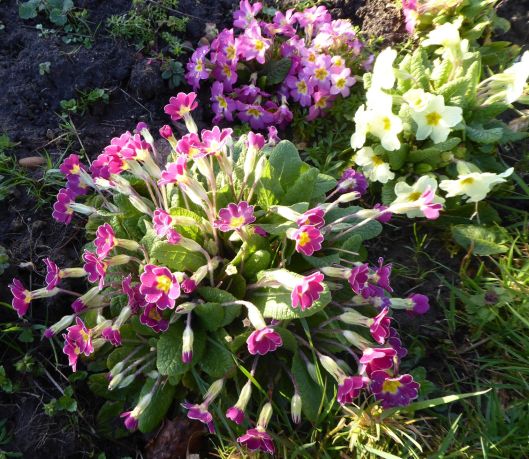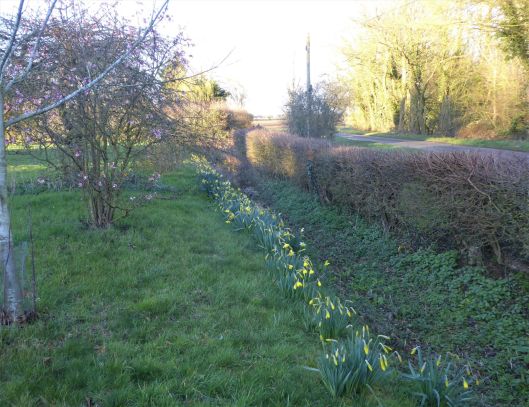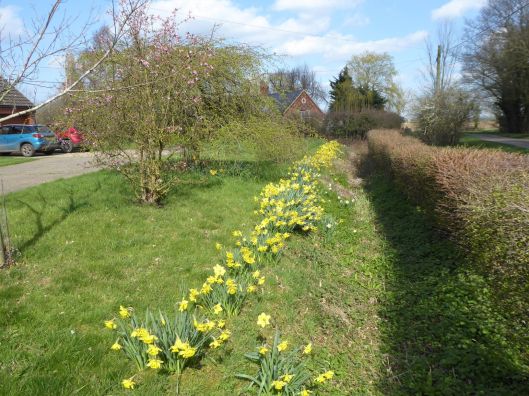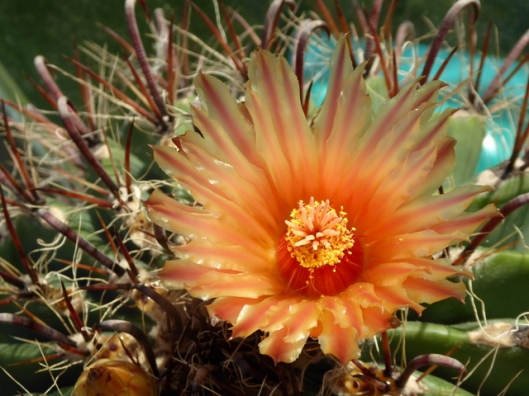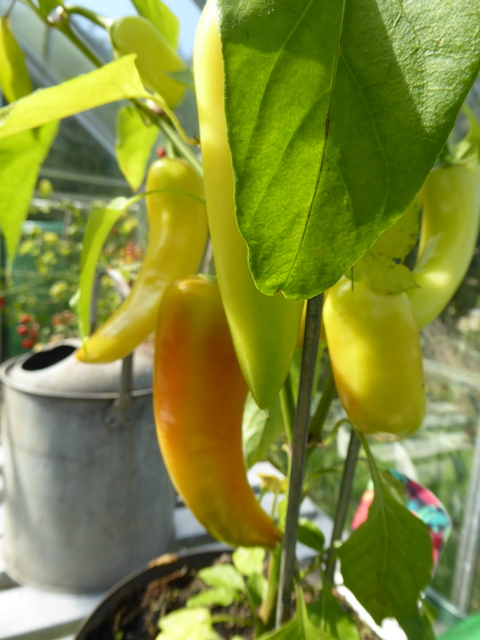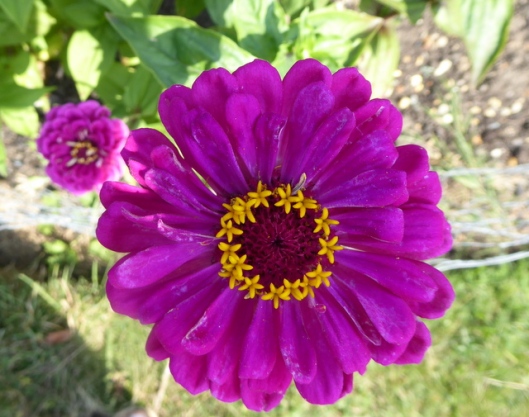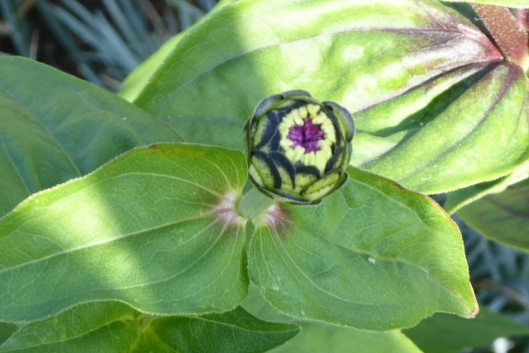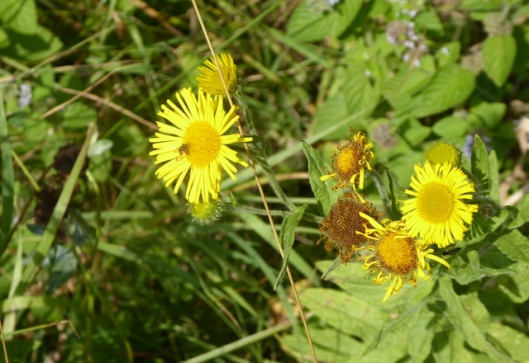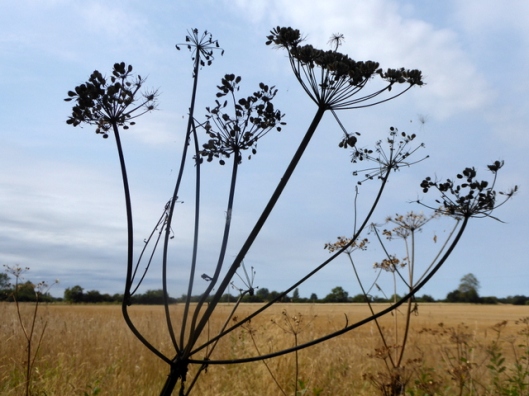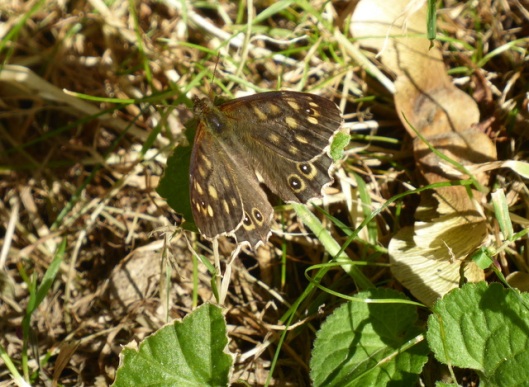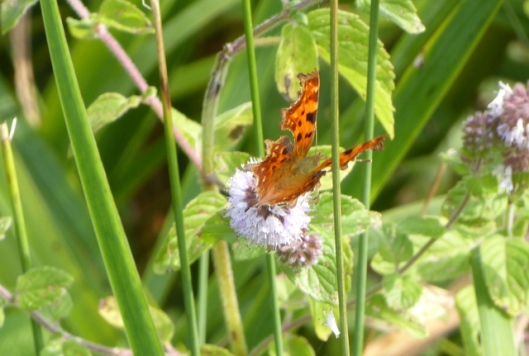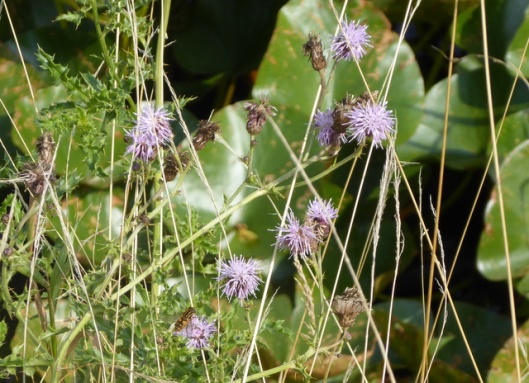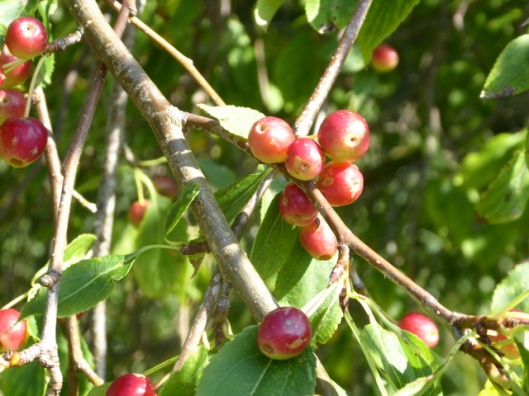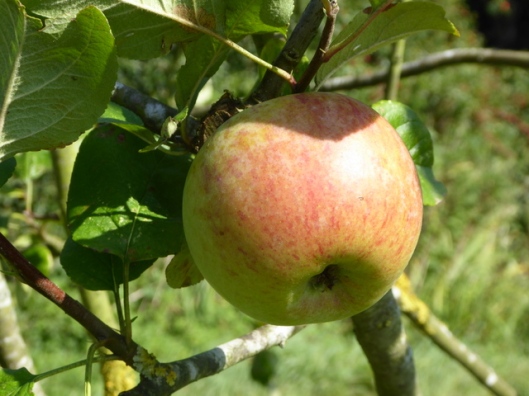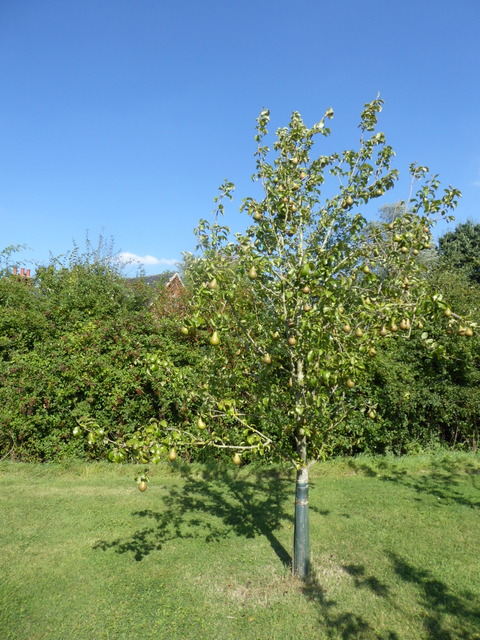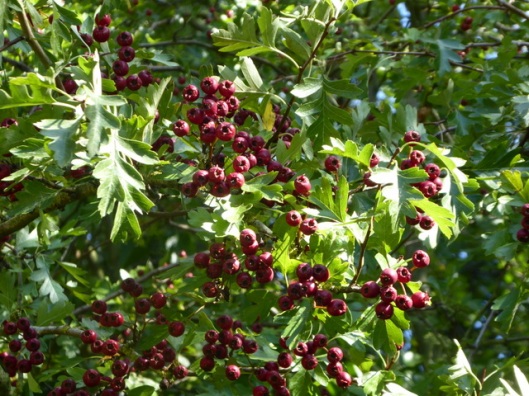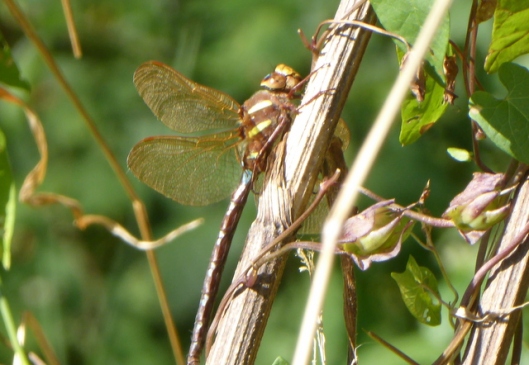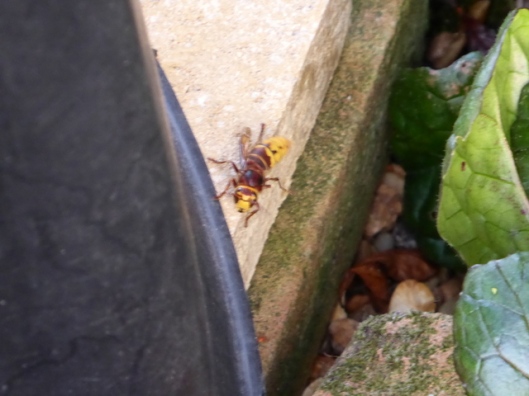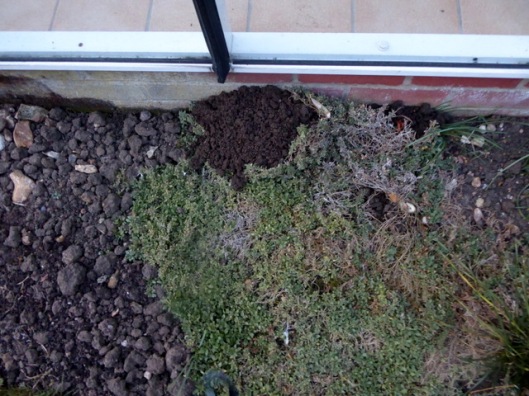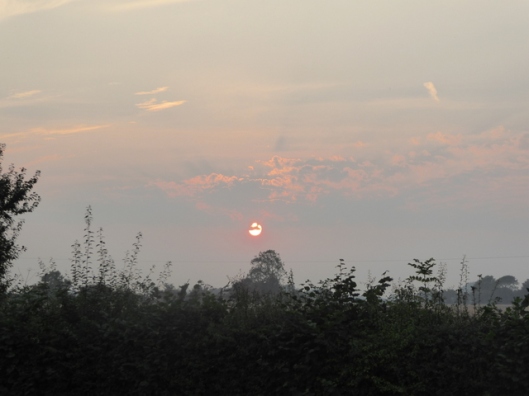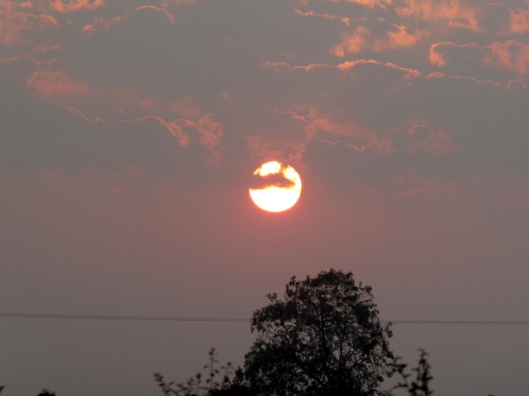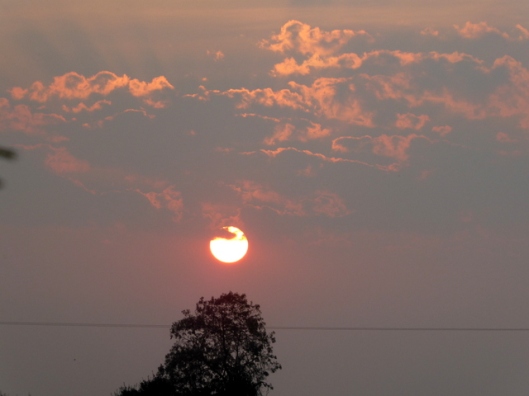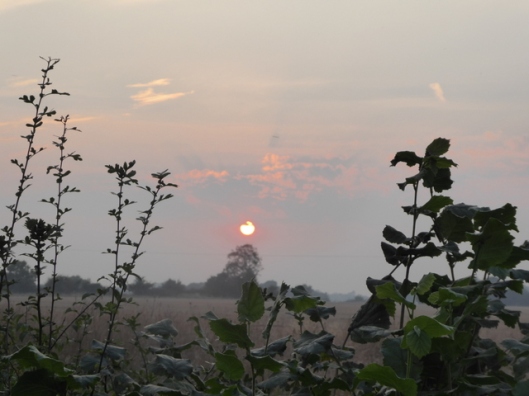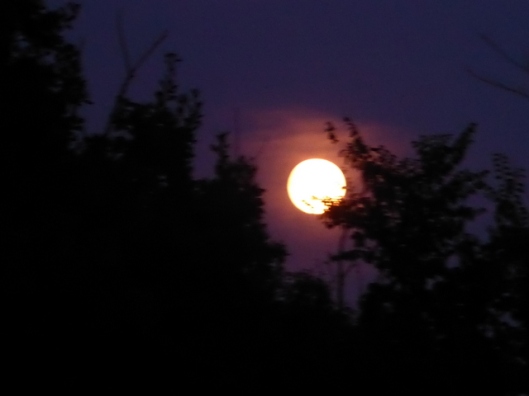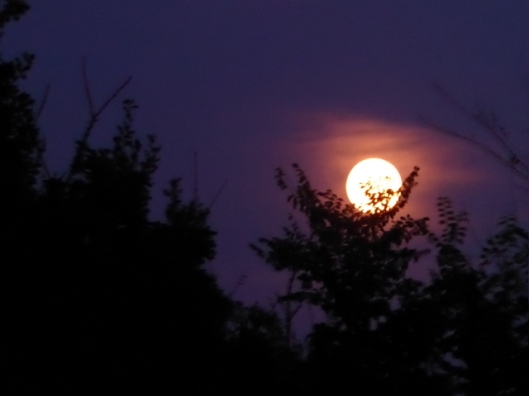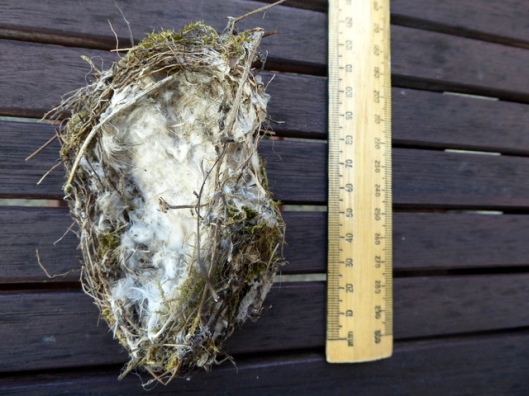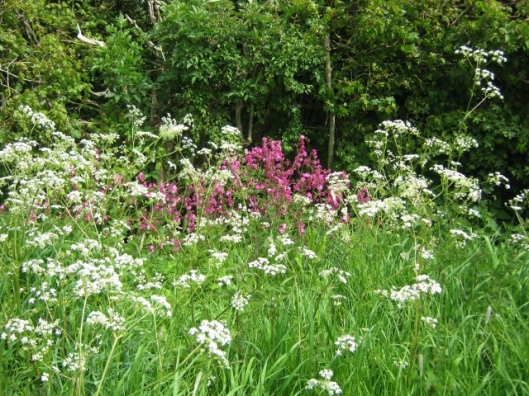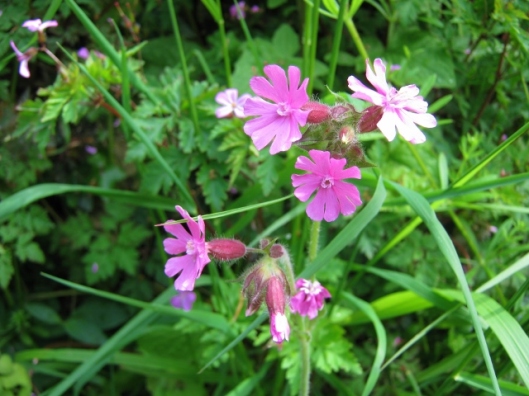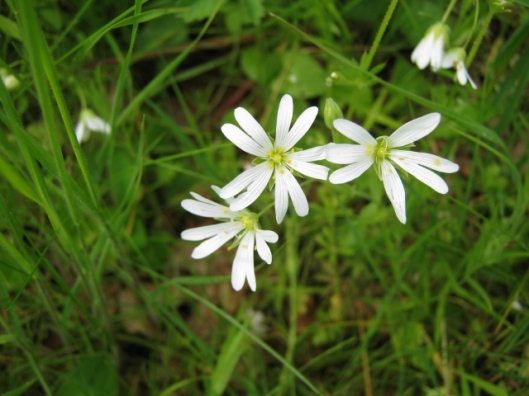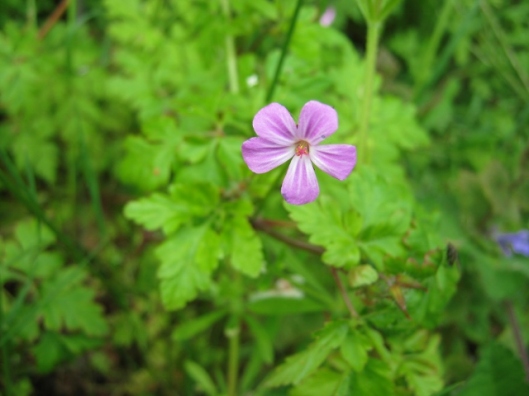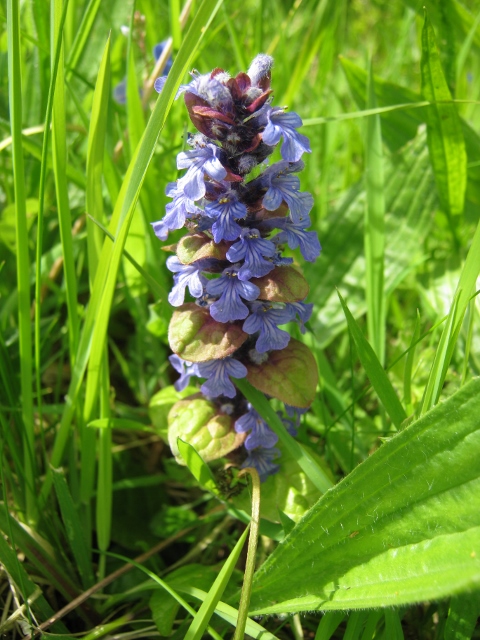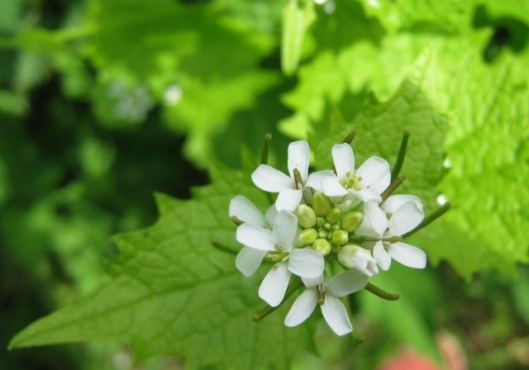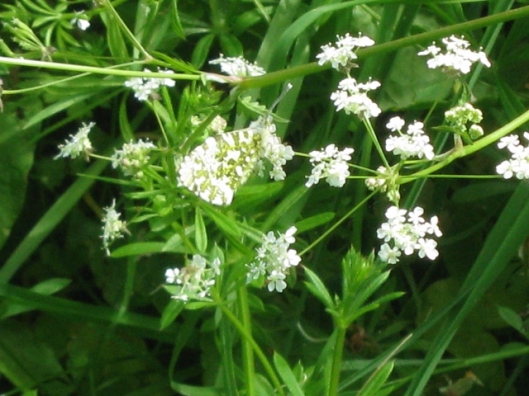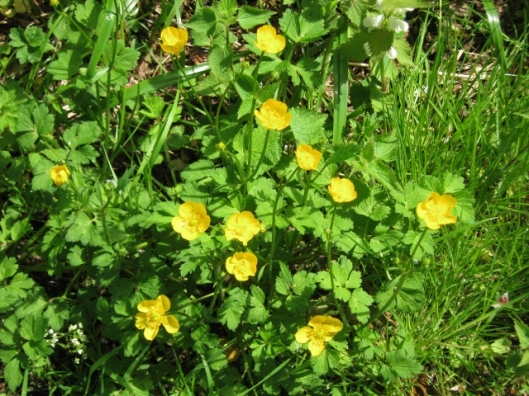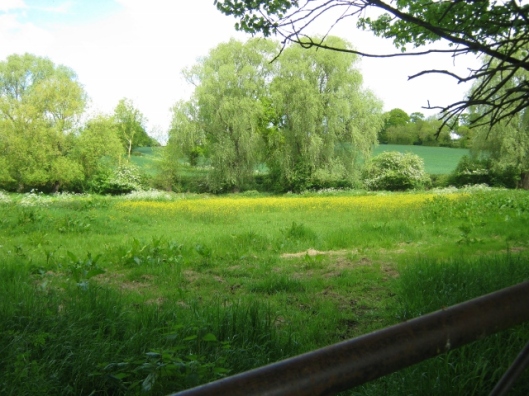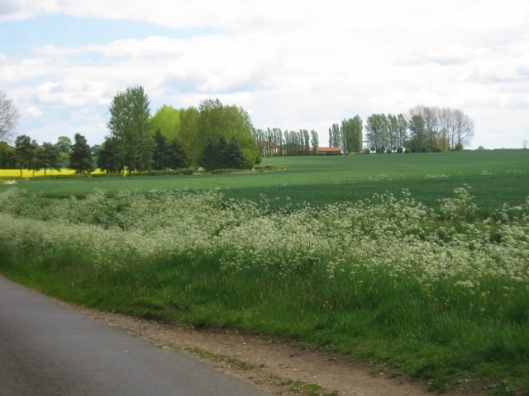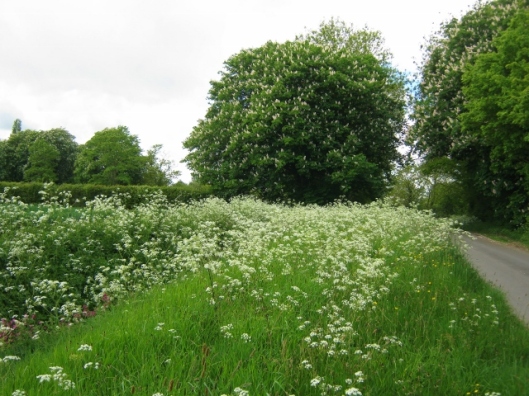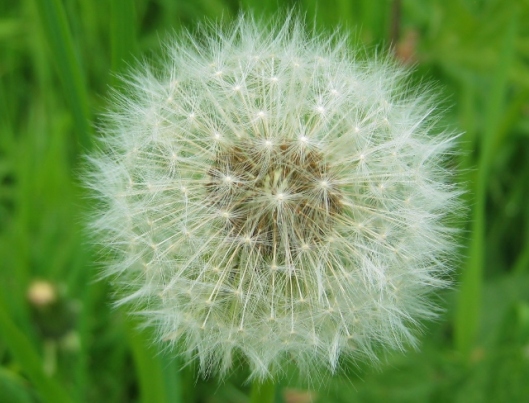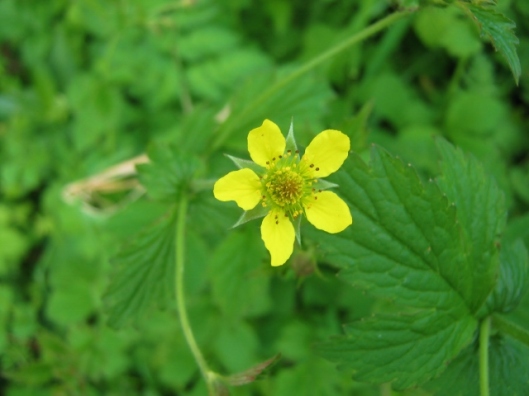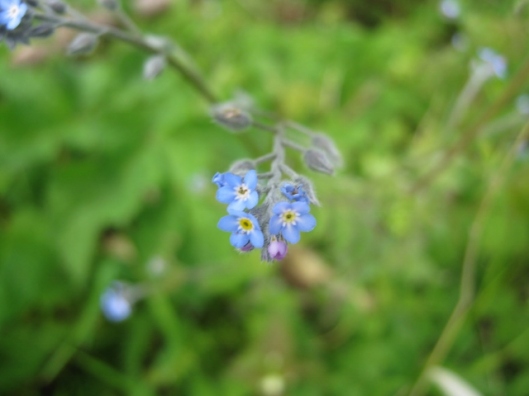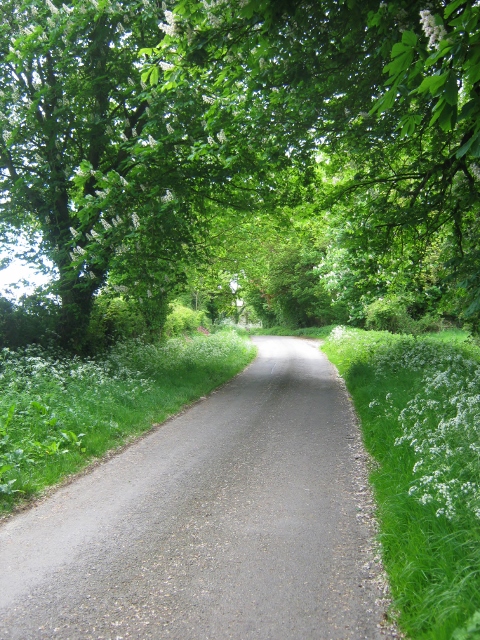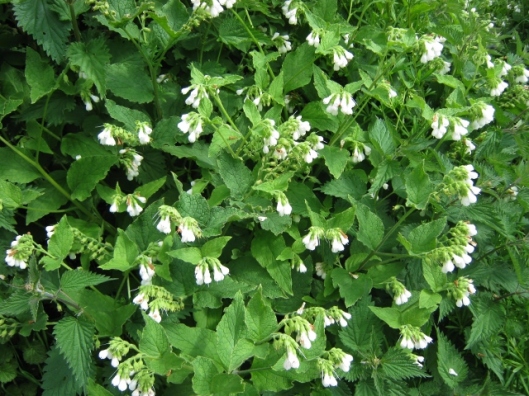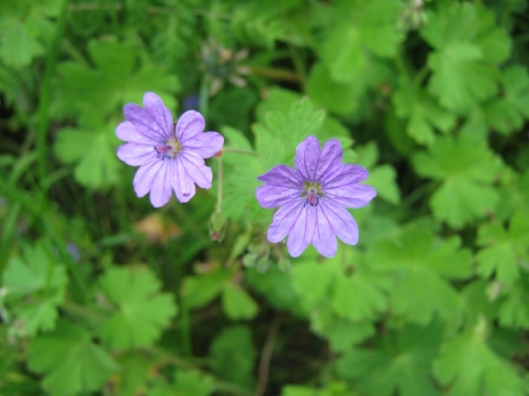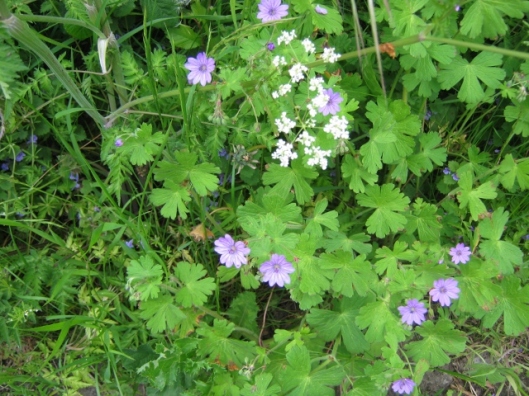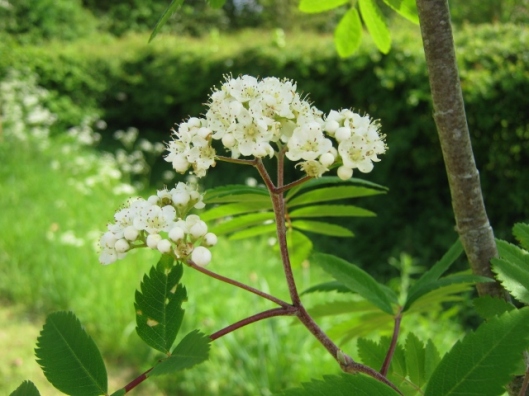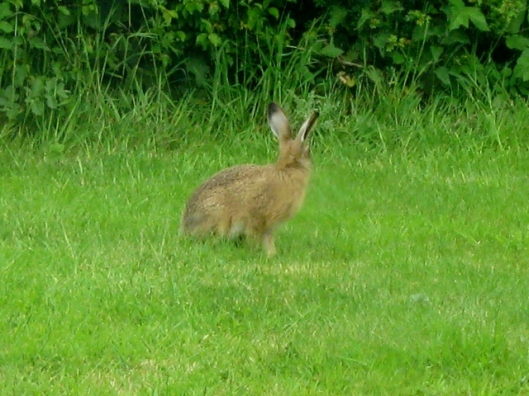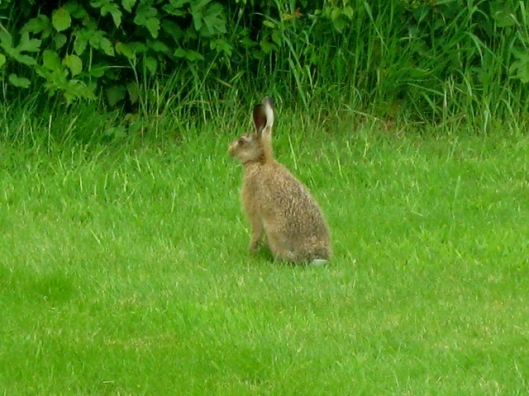Tags
blackthorn, blossom, Brown Hare, Bugle, cherry-plum tree, daffodils, daisy, Dog's Mercury, early dog-violet, flowers, garden, grape hyacinth, lesser celandine, leveret, March, Narcissus Rip van Winkle, Periwinkle, plants, pond, primroses, silver-laced primula, Spindle, St Mary's church Homersfield, Suffolk, Suffolk Lane, trees
Not having posted anything for over two months I have a number of photographs of things I’ve seen on my travels or in the garden. This post will be a selection of these photos.
This photo was taken with my phone early one March morning. You can see the maple leaf sticker on the glass which works well at preventing birds from crashing into the window and injuring themselves. Just outside the window is my witch-hazel which is planted in a large pot and also a Japanese flowering-cherry tree tied to canes, in a different pot. We keep both trees up close to the front of the house to protect them from wind damage. On the other side of our drive you can see the first of the daffodils in flower along the edge of the ditch. What really excited me was the sight of a leveret, a young hare ( lepus europaeus), crouched in the grass. Richard had had a sight of this young animal in the garden a couple of days before this and I was so pleased to see it for myself.
I took this picture with my smaller camera from the utility room window and you can see how damp with dew everything was, including the leveret. It stayed with us for a few days, hardly ever moving from its ‘form’, the nest in the grass it had made for itself.
When this tree first grew I assumed it was an early-flowering blackthorn tree as they can look very similar. However, a few years ago I happened to see some of its fruit before the birds ate it all and realised my mistake.
A year and a half ago I was trying to get rid of Common Nettle and Black Bryony in a flowerbed full of primulas and hellebores. The only way to deal with them was to remove the plants I wanted before tackling the ones I didn’t. I planted some of the primulas at the edge of a bed Richard grows dahlias in. This March I was pleased to see that my treasured silver-laced primula had survived the move and two winters. I still haven’t finished working on that weedy bed! The Primula has a pretty silver edge to its petals.
We have these early violets growing in the grass round our pond.
Our large pond in March. The water-level is very low due to insufficient rainfall for a year.
A week or two on from when the photo of the leveret was taken and the daffodils are all coming out.

Grape Hyacinth (Muscari ), Bugle (Ajuga reptans ), Variegated Lesser Periwinkle(Vinca minor ) and Spindle (Euonymous ) ‘Emerald n Gold’.
This is a very narrow bed alongside the rear of the garage next to the back door. All the flowers are blue and two of the plants have variegated yellow and green leaves. However, just to prove that nothing goes exactly to plan, the bed also contains a red-berried Firethorn ( Pyracantha) which has creamy white flowers; this plant was here when we moved here and the birds and bees love it.

St. Mary’s church at Homersfield
We attended church here in March and I thought it looked lovely in the sunshine.
That same day I walked round the garden and then out onto the verge next to the lane beyond our hedge and found these primroses in flower. Garden primulas are able to flower at any time of the year as long as it isn’t too hot or too cold. Wild primroses, however, have their season and late March is the best time to see them round here.
There is a tangle of Blackthorn on the verge and it was just coming into flower. You can see our garden over the other side of the hedge.
It is a very untidy tree with suckers but it has blossom like snow and the fruit (sloes) in the autumn are used for flavouring gin, among other things.
We have this rather insignificant plant growing under all our hedges and in amongst the trees near the large pond. It is often a sign of old woodland and won’t tolerate being disturbed; it fades away. The male and female flowers are on separate plants.
Here is this sunshiny little flower peeping out from inbetween Common Nettles and Ground Elder in the ditch.
These were the highlights of March this year. I hope to begin an April post as soon as I have published this one. Whether I’ll be able to finish it and publish it in the next day or so only time will tell!








